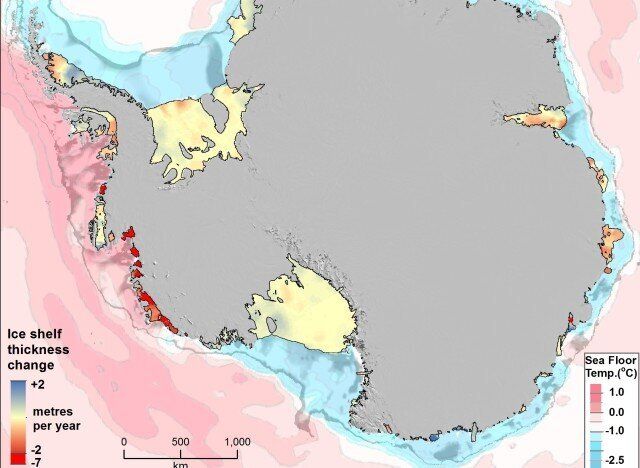Global sea levels could rise at a significantly higher rate than had been previously predicted, a new study, published this week in the journal Nature, revealed.
The findings, which came from research led by glaciologist Hamish Pritchard of the British Antarctic Survey (BAS), show that the western side of Antarctica is shedding 23 feet of ice sheet each year, from a mixture of causes, most of which are man-made.
Using the NASA ICESat satellite, which recorded 4.5 million measurements over five years, the BAS discovered that 20 of Antarctica's 54 ice shelves across Antarctica were actually being melted from below, by warm water, rather than warmer air caused by global warming. They believe that changes in wind currents pushed warmer water towards the ice shelves.
This means that a larger amount of ice is melting in the area than was previously thought.
The cause of the wind change itself, Pritchard said, was due to man-made greenhouse gases and the hole in the ozone layer, as well as natural weather variation.

Pritchard said: “In most places in Antarctica, we can’t explain the ice-shelf thinning through melting of snow at the surface, so it has to be driven by warm ocean currents melting them from below."
“We’ve looked all around the Antarctic coast and we see a clear pattern: in all the cases where ice shelves are being melted by the ocean, the inland glaciers are speeding up. It’s this glacier acceleration that’s responsible for most of the increase in ice loss from the continent and this is contributing to sea-level rise.”
Pritchard said that the team was surprised by how sensitive the glaciers seem to be. He explained that some shelves were thinning by a number of metres per year, thus adding billions of tons of ice into the oceans.
"It means that we can lose an awful lot of ice to the sea without ever having summers warm enough to make the snow on top of the glaciers melt - the oceans can do all the work from below."
The report concludes that what is currently happening in Antarctica, according to their study, "may have already triggered a period of unstable glacier retreat".
The area which the BAS studied, the Western Antarctic Ice Sheet, would add 16 feet to the global see level if it melted, scientists predict, but it would take decades for that to happen.
Two experts in the field, Waleed Abdalati of NASA and Ted Scambos of the National Snow and Ice Data Center told the Associated Press that the study's findings "make an important advance" and will change the way scientists think about the dangers of melting in Antarctica.
You can see amazing photos from the new study below: